If you think that low-impact fishing techniques might limit your chances of a successful catch, think again.
Discover how finesse fishing methods combined with the right gear can not only improve your fishing game but also contribute to the well-being of our aquatic environments.
From selecting the perfect hand line to supporting conservation efforts, these 10 best techniques with line are sure to enhance your fishing experience while making a positive impact.
Key Takeaways
- Opt for barbless hooks to minimize harm to fish populations and promote sustainable fishing practices.
- Choose durable, low-stretch fishing lines with high abrasion resistance for increased sensitivity and reduced breakage.
- Practice catch and release fishing with proper handling techniques to maintain healthy fish stocks and increase survival rates.
- Select eco-friendly gear like biodegradable lines and non-toxic sinkers to reduce environmental impact and support conservation efforts.
Selecting the Right Hand Line
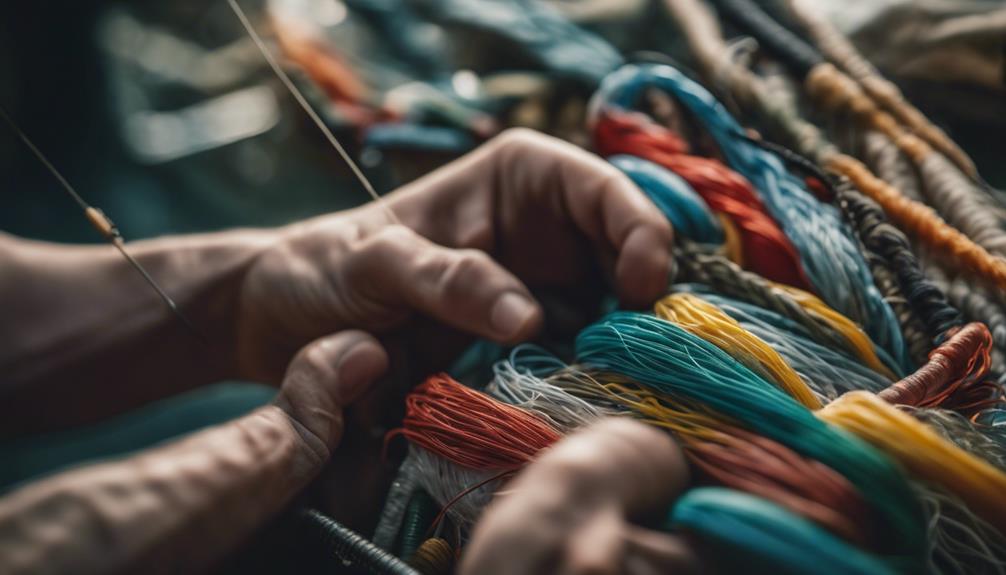
When choosing a hand line for low-impact fishing, opt for durable materials like braided or monofilament lines. These lines offer strength and resilience, important for handling different fish species and rough underwater conditions.
Confirm the weight rating of the hand line matches the target fish to prevent breakage or loss. Look for hand lines with a comfortable grip to reduce hand fatigue during extended use and enhance control over your fishing technique.
Choosing a line with minimal stretch increases sensitivity, helping you detect subtle bites and improve hook setting. Additionally, selecting a hand line with high abrasion resistance is essential for withstanding the challenges posed by rocky or abrasive terrains underwater.
Using Barbed Hooks Mindfully
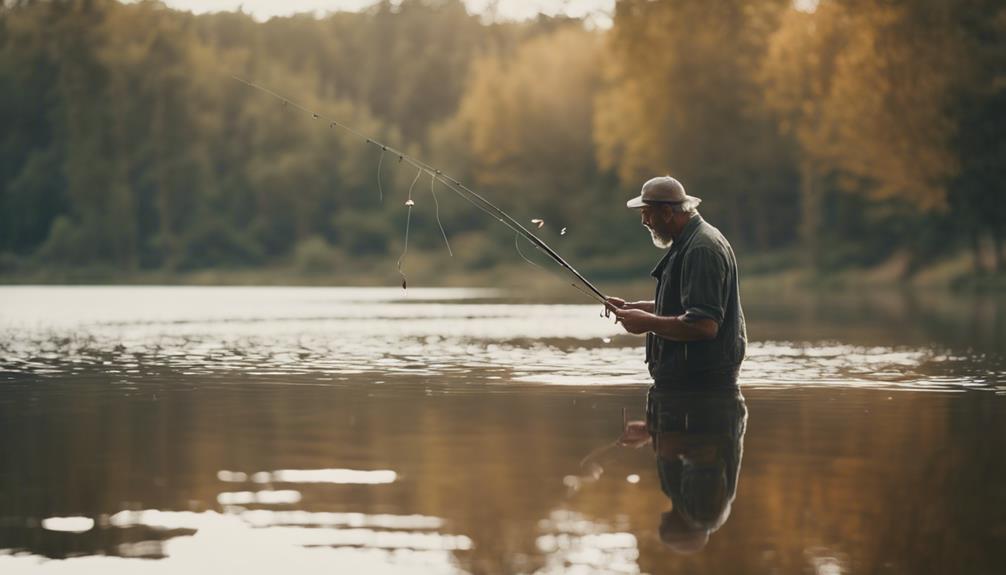
To minimize harm to fish and enhance hook removal ease, consider using barbless hooks mindfully during your fishing practices. Here are three key points to keep in mind:
- Reduced Damage: Barbless hooks cause less harm to fish compared to barbed hooks, leading to better conservation of fish populations.
- Easier Hook Removal: Using barbless hooks makes it simpler to safely remove the hook from the fish, reducing stress and potential injuries.
- Regulatory Requirements: In certain fishing areas, barbless hooks are mandatory to minimize fish injuries and promote sustainable fishing practices.
Practicing Catch and Release Techniques

Start practicing catch and release techniques to minimize harm to fish populations and promote sustainable fishing practices. Catch and release fishing is a vital approach that allows fish to be safely returned to the water, reducing the impact on ecosystems.
Using barbless hooks and minimizing fight time can increase the survival rate of released fish. Proper handling is essential; avoid excessive air exposure and gill damage. Research indicates that catch and release practices contribute to maintaining healthy fish stocks.
Anglers play a key role in preserving aquatic environments through education on effective catch and release methods. By adopting these techniques, you can enjoy fishing while helping to conserve fish populations for the future.
Opting for Biodegradable Lines
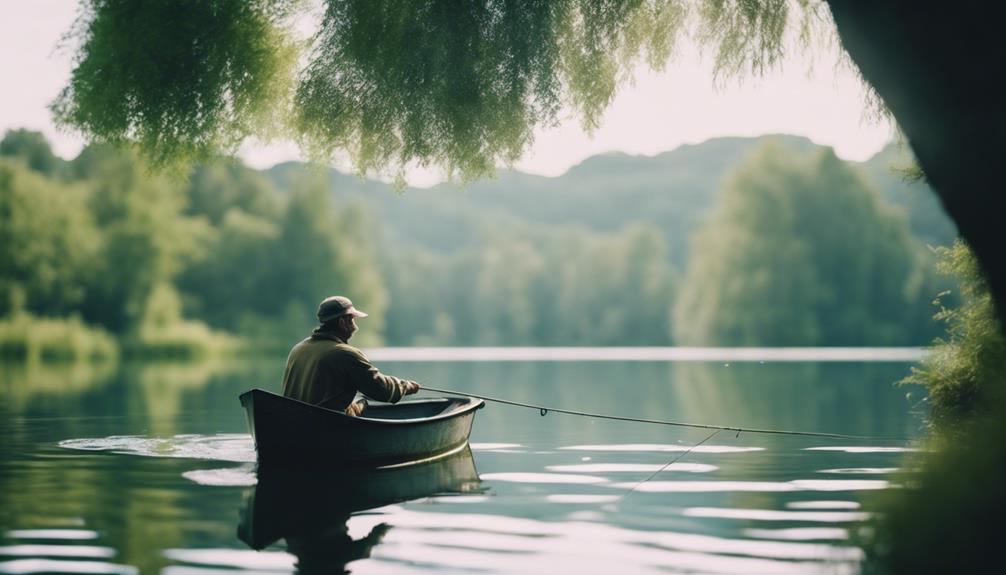
When choosing fishing lines, consider opting for biodegradable options.
These lines are eco-friendly and break down faster than traditional ones, reducing harm to marine life.
Eco-Friendly Line Options
How can choosing biodegradable fishing lines benefit the environment and promote sustainable fishing practices? Biodegradable fishing lines are a great eco-friendly option that can positively impact the environment.
Here are three reasons why opting for biodegradable lines is a smart choice:
- Reduced Water Pollution: Biodegradable lines break down naturally, reducing the amount of plastic waste in water bodies and improving water quality.
- Minimal Impact on Aquatic Ecosystems: Some biodegradable lines are designed to decompose in water, minimizing harm to aquatic life and habitats.
- Sustainable Fishing Practices: Choosing biodegradable lines promotes eco-friendly fishing practices, helping to conserve marine environments for future generations.
Benefits of Biodegradability
By choosing biodegradable fishing lines, you actively contribute to reducing environmental harm and promoting sustainable fishing practices. Biodegradable lines break down naturally, reducing the risk of entanglement for wildlife and minimizing environmental impact by avoiding persistent plastic pollution.
As these lines decompose over time, the presence of harmful debris in waterways decreases, supporting sustainable fishing practices and conservation efforts. Opting for biodegradable lines offers an eco-friendly alternative for anglers seeking to lessen their carbon footprint.
Making the switch to biodegradable line not only benefits the environment but also helps secure a healthier ecosystem for marine life. Choose biodegradable fishing lines to make a positive impact on our oceans and waterways.
Impact on Marine Life
Choosing biodegradable fishing lines over traditional ones reduces the impact on marine life by preventing long-term harm to aquatic animals and ecosystems. Here's why opting for biodegradable lines is essential:
- Biodegradable fishing lines break down faster, reducing the risk of entanglement for marine life.
- Traditional fishing lines can persist for hundreds of years, posing a threat to marine organisms.
- Biodegradable lines are made from materials that degrade naturally, minimizing pollution and ecological damage.
Avoiding Lead Sinkers

When fishing, you should avoid using lead sinkers to prevent harm to aquatic life. Opt for eco-friendly alternatives like tungsten, steel, or biodegradable materials.
Lead-Free Alternatives
When opting for fishing gear, consider utilizing lead-free alternatives such as tungsten, steel, tin, bismuth, or ceramic weights to safeguard water ecosystems and wildlife. These options provide effective weight for your line without the harmful impacts of lead sinkers.
Here are three reasons why lead-free alternatives are the way to go:
- Eco-friendly: Lead-free alternatives help protect aquatic life and prevent water contamination.
- Healthier choice: By avoiding lead sinkers, you reduce the risk of lead poisoning for both wildlife and humans.
- Support conservation: Using lead-free alternatives aligns with conservation efforts and promotes sustainable fishing practices.
Make the switch to lead-free weights for a more environmentally conscious fishing experience.
Environmental Impact Reduction
To minimize environmental harm while fishing, opt for non-toxic sinkers like tungsten, steel, or bismuth instead of lead options. Lead sinkers can leach toxic lead into water, harming aquatic life and ecosystems. By using lead-free alternatives, such as tungsten or steel sinkers, you can reduce environmental contamination and protect wildlife.
Regulations in some areas even mandate the use of non-toxic sinkers to minimize lead exposure in water bodies. Choosing eco-friendly sinkers not only benefits the environment but also contributes to sustainable fishing practices and conservation efforts. Make a positive impact on the environment by selecting non-toxic sinkers that help in environmental impact reduction while enjoying your fishing experience.
Safety for Wildlife
Switching to non-toxic alternatives like tungsten or steel weights helps prevent lead poisoning in wildlife, safeguarding their well-being and preserving ecosystems.
Here are three reasons why using lead-free sinkers is important for wildlife safety:
- Avoiding Lead Poisoning: Lead sinkers can be ingested by birds, fish, and other animals, leading to potential death.
- Protecting Ecosystems: Lead sinkers can leach toxic substances into water, harming aquatic ecosystems.
- Reducing Environmental Impact: By using lead-free sinkers, you contribute to minimizing environmental damage and protecting wildlife populations.
Make the switch today to promote a safer environment for all living creatures.
Employing Non-Toxic Bait Options
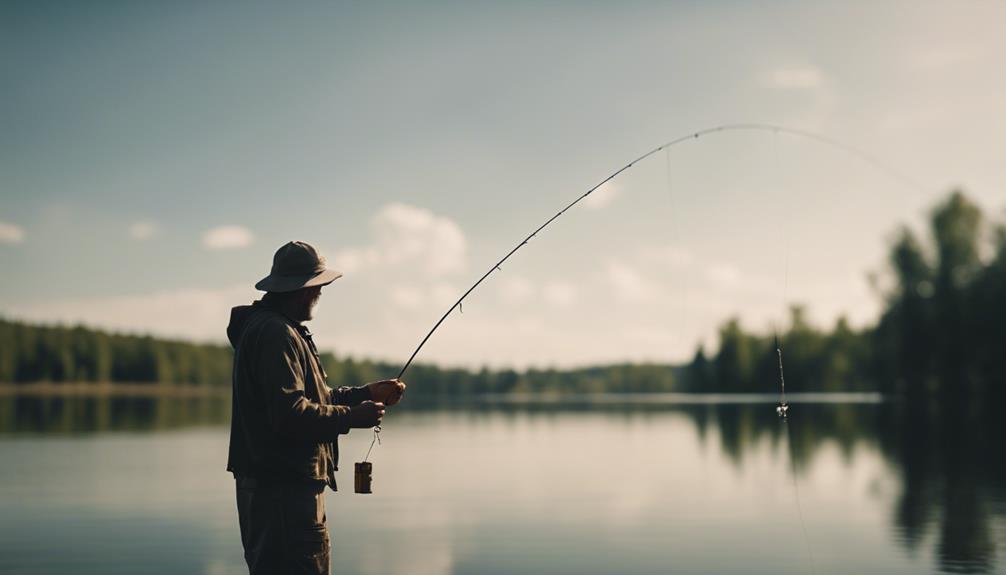
Consider incorporating non-toxic bait options like artificial lures made from silicone, rubber, or wood to guarantee eco-friendly fishing practices and minimize environmental impact.
Using light line is pivotal when pairing it with these non-toxic baits to secure a seamless fishing experience.
Opting for biodegradable alternatives such as corn, bread, or worms is another effective way to reduce harm to aquatic ecosystems.
Additionally, natural bait like insects, grubs, or larvae are safe options readily available for anglers.
Remember to avoid lead-based sinkers and choose materials like tungsten or steel to prevent toxic contamination in water bodies.
Choosing Sustainable Fishing Spots
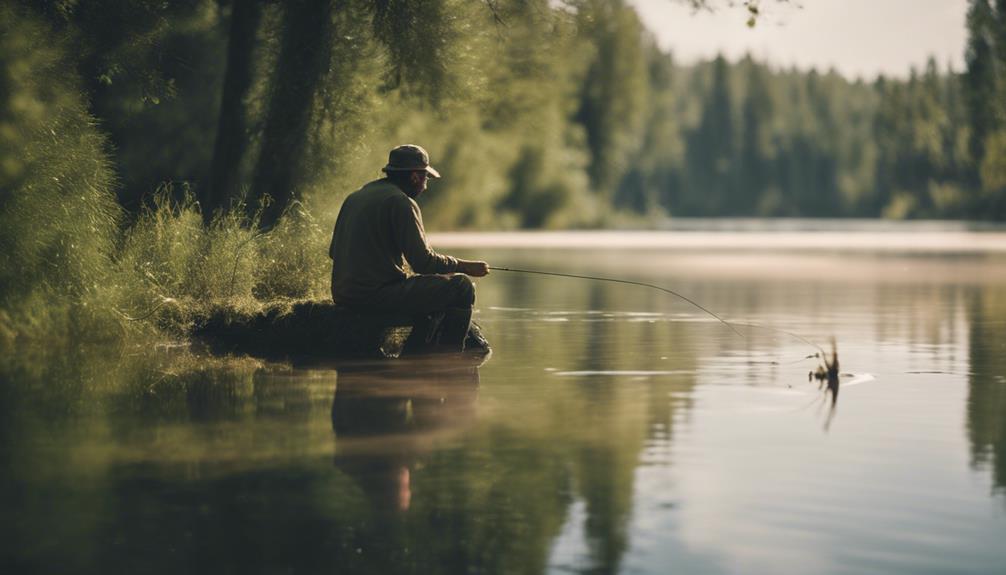
When scouting for ideal fishing locations, prioritize selecting spots that have minimal environmental impact and promote sustainable angling practices. Here are three essential tips for choosing sustainable fishing spots:
- Select designated fishing areas with proper waste management facilities to reduce environmental harm.
- Look for spots that encourage catch-and-release practices to help conserve fish populations for the future.
- Avoid fishing near sensitive habitats like coral reefs or nesting areas to minimize disturbance to marine life.
Supporting Fisheries Conservation Efforts
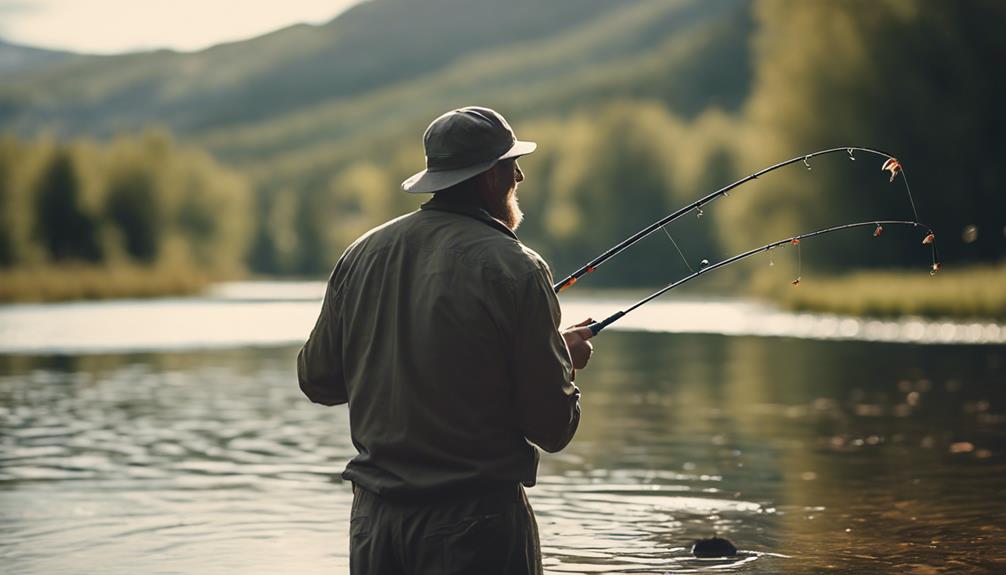
By supporting fisheries conservation efforts through low-impact fishing techniques, you can play an important role in maintaining healthy fish populations. Using strong line can help prevent breakage and reduce the risk of losing gear in the water, which can harm marine life.
Opting for barbless hooks is another way to minimize damage to fish, making catch-and-release practices more effective. Proper handling and releasing techniques, such as keeping the fish in the water while removing the hook and supporting its body until it swims away, can reduce stress and boost survival rates.
Participating in tag-and-release programs also aids in fisheries management and research, providing valuable data for conservation efforts. Make a positive impact on fish populations by incorporating these practices into your fishing routine.
Minimizing Line Waste and Littering

When it comes to minimizing line waste and littering, remember to dispose of your fishing line in designated bins and participate in recycling programs. Opt for biodegradable fishing line to reduce environmental impact, and educate others on proper disposal methods to uphold responsible practices.
Leaving behind fishing line or tackle can harm habitats and wildlife, so always make sure to clean up after yourself to preserve nature.
Line Disposal Methods
To minimize fishing line waste and littering, it's important to properly dispose of your fishing line using designated methods. Here are three key ways to help you responsibly manage your fishing line waste:
- Use Local Recycling Programs: Locate recycling bins specifically designated for fishing line disposal in your area. Recycling your fishing line helps prevent harm to marine life and reduces environmental pollution.
- Send Fishing Line to Specialized Facilities: Consider sending your used fishing line to specialized facilities like Berkley, which focus on recycling fishing line to promote sustainability and protect ecosystems.
- Keep Designated Disposal Areas: Maintain designated disposal areas on your boat or at the fishing spots you frequent to limit littering of fishing line and contribute to a cleaner environment.
Eco-Friendly Line Choices
To minimize the environmental impact of fishing line waste and littering, choosing eco-friendly fishing lines made from biodegradable materials or recycled resources is a proactive step in promoting sustainability while reducing harm to marine life. Opt for braided lines, which have a longer lifespan and are less likely to fray or deteriorate quickly compared to monofilament lines.
Educating Others on Low-Impact Practices
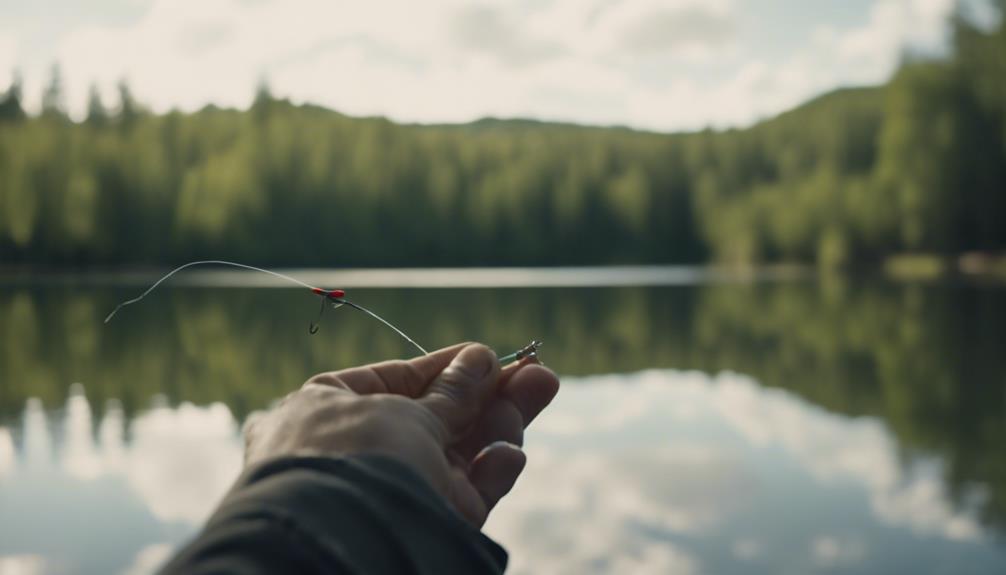
By educating others on low-impact fishing practices, you can play an essential role in promoting responsible fishing habits and preserving the environment. Here are three key ways you can make a difference:
- Raise Awareness: Teach others about the importance of responsible fishing to protect marine life and habitats.
- Prevent Harm: Show proper line disposal methods to prevent wildlife entanglement and environmental damage.
- Encourage Participation: Share information on recycling fishing line to inspire others to join conservation efforts.
Empowering individuals with knowledge about sustainable fishing techniques and the impact of their actions can lead to a positive change in environmental conservation. Your efforts can make a significant difference in preserving our oceans for future generations.
Conclusion
Choose low-impact fishing techniques with care. Use barbless hooks and biodegradable lines, release fish responsibly, and avoid lead sinkers.
Support conservation efforts, minimize waste, and educate others.
By making simple choices, you can enjoy fishing while safeguarding the environment. Make a positive impact and help secure sustainable fishing for future generations.
👨👩👧👦 Dwight’s a married dad of 4 who loves to cast a line 🎣 into both fresh and salt waters. His heart belongs to his family and the sea. 🌊 #FamilyMan #FishingLife #DadOf4 🐟✨

